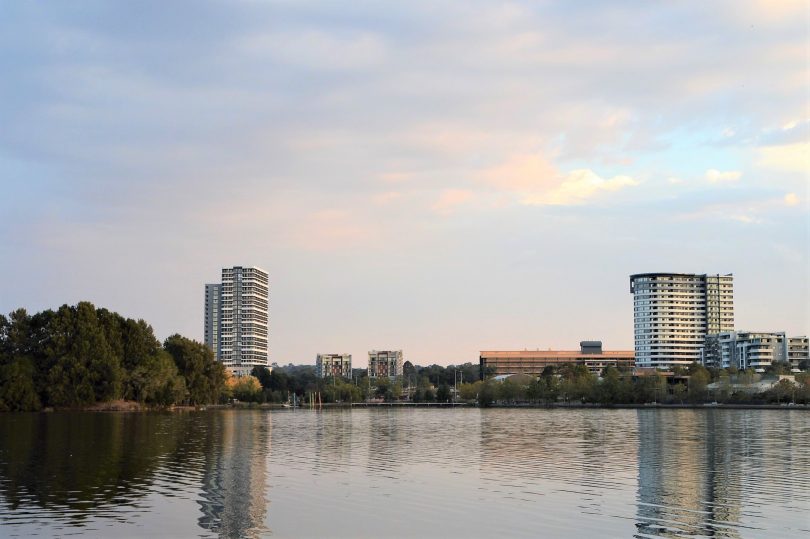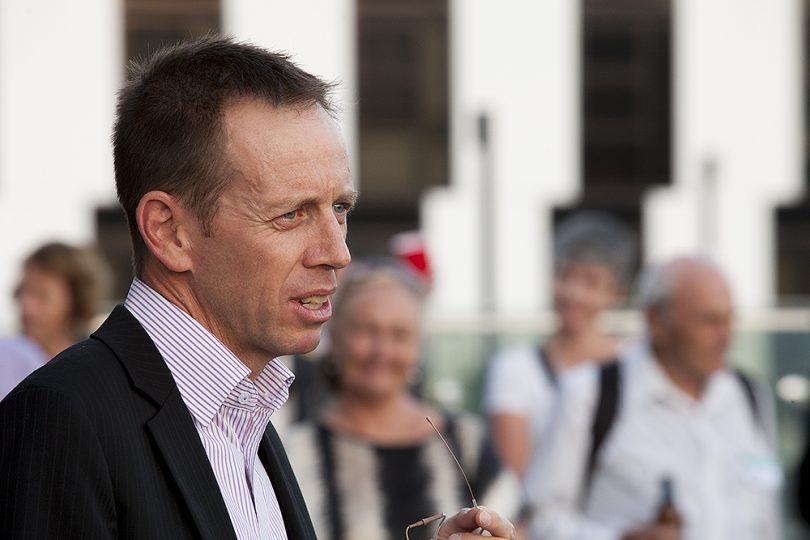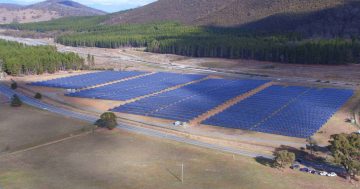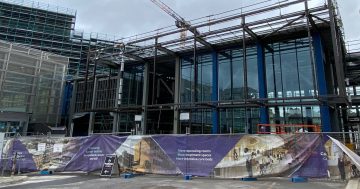
ACT property developers have been challenged to build the Territory’s first ‘net zero’ emissions building. Pictured are some of Belconnen’s current high-rise buildings. Photo: Glynis Quinlan.
ACT property developers have been challenged to ‘step up’ and raise their environmental standards by building the Territory’s first ‘net zero’ emissions commercial or large scale residential building
Speaking at a Property Council breakfast forum in Canberra yesterday, ACT Climate Change and Sustainability Minister Shane Rattenbury called on the industry to deliver a building which consumes less energy in total than the amount of renewable energy it produces.
“Across the board, we need to continue to raise the standard of environmental performance in our buildings,” Mr Rattenbury said.
“In this context, we need someone to step up and deliver the ACT’s first ‘net zero’ emissions large-scale building, which will be an iconic achievement and a lasting legacy for our city.
“The ACT is already a leader when it comes to energy and we’re on track to have 100 per cent renewable electricity by 2020.
“But to reduce the ACT’s greenhouse gas emissions to our target of net zero by mid-century, we now need to focus on other sources of emissions, and the built environment is a key area.
“Net zero buildings are highly efficient and consume less energy in total than the amount of renewable energy they produce.

Shane Rattenbury has challenged ACT property developers to raise the environmental standards of their buildings. Photo: Supplied.
“Recent research commissioned by the City of Sydney also shows that in Australia today these buildings are technically feasible and highly cost-effective,” Mr Rattenbury said.
“In Canberra, high-density residential or commercial net zero buildings would bring many benefits, including reducing our greenhouse gas emissions, providing high-quality urban living and work spaces and increasing density for a more liveable city.
“The Government is keen to ensure our planning system allows for these types of best practice environmental developments in Canberra, which is why we are also progressing a key Parliamentary Agreement item with the Demonstration Housing project.”
The City of Sydney August 2016 report ‘Accelerating Net-Zero High-Rise, Residential Buildings in Australia’ states that new highly energy efficient building technologies and design features are increasingly cost-effective, expanding the boundary of what is possible both technically and commercially.
“With buildings having an economic life of 40 years or more, decisions must be made in the very short term if Australia is to get onto a path to net-zero emissions by mid-Century,” the report states.
“Delay means cost. A wait-and-see approach would lead to higher costs for energy consumers, lower standards and competitiveness in industry and higher greenhouse gas abatement costs in future.”
While the report found that net-zero high-rise residential buildings are technically feasible and are highly cost-effective from a societal perspective, it also revealed some challenges.
“Commercial uptake of net-zero high-rise residential buildings in Australia will be slow due to significant gaps and weaknesses in our energy efficiency and climate policy framework,” the report found.
“A strategic and integrated approach, by industry and governments, could rapidly transform the market for net-zero high-rise residential buildings in Australia.”
The report looks at adopting a ‘fabric first’ approach to achieving net-zero emissions with the aim of improving the performance of the thermal shell as much possible in order to largely eliminate heating and cooling demands.
Key strategies put forward include:
- Reduced window-to-wall ratios
- High-performance glazing
- Improved insulation
- Air tight facade
- Mechanical ventilation with heat recovery
- High efficiency ceiling fans, appliances and lighting
- High Coefficient of Performance (COP) heat pumps for domestic hot water and swimming pools
- Building integrated (and some rooftop) photovoltaics (PV).
Do you think more needs to be done to raise the environmental standards of the ACT’s high-rise buildings? What strategies do you think would be effective? Let us know by commenting below.





















